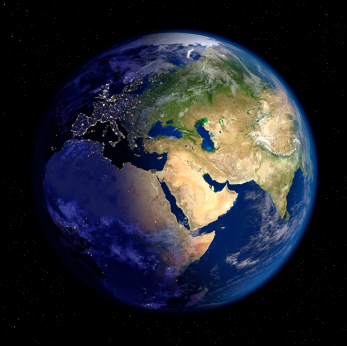Earth Day Science
 Earth Day is just around the corner. Now is the perfect time to teach children about respecting and caring for the earth. Earth Day science is a great way to give hands-on lessons about recycling, renewable energy and the environment. Here are some fun facts we’ve assembled.
Earth Day is just around the corner. Now is the perfect time to teach children about respecting and caring for the earth. Earth Day science is a great way to give hands-on lessons about recycling, renewable energy and the environment. Here are some fun facts we’ve assembled.
- The first Earth Day was on April 22, 1970. Gaylord Nelson, a U.S. Senator from Wisconsin began the day to organize a large public demonstration to get the attention of politicians. The first Earth Day was celebrated by more than 20 million people. Earth Day is credited with starting the modern environmental movement.
- Recycling one ton of paper saves an average of 7,000 gallons of water, 3.3 cubic yards of landfill space, 3 barrels of oil, 17 trees and 4,000 kilowatt-hours of electricity (enough to power the average home for 6 months).
- What is a “green” product? Green products are safe for the environment, contain no chlorofluorocarbons (they destroy the ozone), they decompose and are made from recycled materials.
- What do the recycle numbers mean on plastic?
Plastic #1 – polyethylene terephtalate (PETE or PET). Disposable water bottles are made from the clear plastic that is generally safe. It has a porous surface that allows bacteria and flavors to accumulate.
Plastic #2 – high density polyethylene (HDPE). Milk jugs, detergent bottles, juice bottles, butter tubs are made from #2. It is usually opaque and is considered safe.
Plastic #3 – polyvinyl chloride (PVC). Used in food wrap, plumbing pipes and bottles. It is tough plastic but not safe to cook food near it. The phthalates in it can interfere with hormonal development. Don’t cook using food wrap, especially in the microwave.
Plastic #4 – low density polyethylene (LDPE). Used in grocery bags, food wrap, squeezable bottles and bread bags. It is considered safe.
Plastic #5 – polypropylene. It is used in yogurt cups, wide necked containers, medicine bottles, straws and ketchup bottles. Plastic is considered safe.
Plastic #6 – polystyrene or styrofoam. It is used in disposable containers and packaging. Evidence suggests this plastic leaches potentially toxic chemicals, especially when heated. It is difficult to recycle.
Plastic #7 – mixed plastics that were invented after 1987. “Polycarbonate falls into this category, including the dreaded BPA. So do modern plastics used in anything from iPods to computer cases. It also includes some baby bottles and food storage containers which resist staining,” from EcoVillageGreen.com
Looking for a great science experiment for Earth Day? Try one of these:
- Clean Air – Denver’s Brown Cloud
- The Amazing Oil Clean-up Polymer
- Vanishing Styrofoam
- Gardening with Water Jelly Crystals
- The Power of Compact Fluorescent Lights
Sources: Buzzworm: The EnvironmentalJournal, Gale Book of Averages, EcoVillageGreen




Trackbacks & Pingbacks
[…] Earth Day Science | Steve Spangler's Blog […]
Leave a Reply
Want to join the discussion?Feel free to contribute!